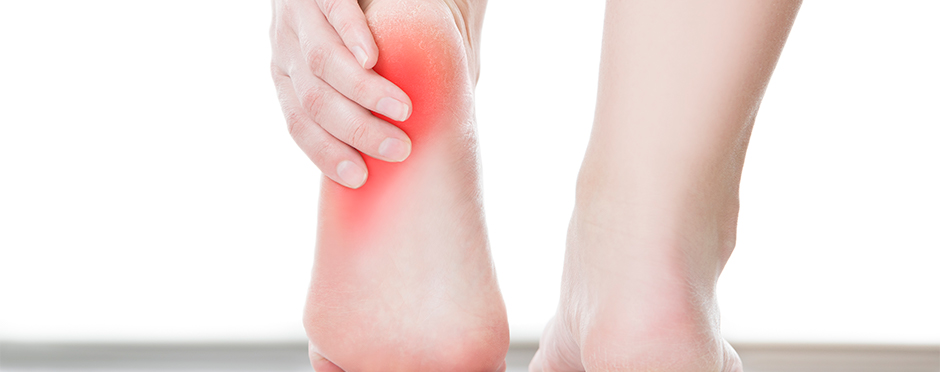
Plantar Fasciitis: Causes and Treatment Options
Leave a CommentAre you suffering from pain at the bottom of the heel? It is important to identify when symptoms occur, where they occur and what the symptoms feel like in order to classify the pain as plantar fasciitis (PF).
Common PF symptoms include pain with initial steps in the morning, pain with steps after prolonged rest and pain that is relieved with activity. Many patients wonder, what is causing these symptoms and why are they occurring? Also, how can physical therapy help relieve these symptoms? Discover the answer to these questions below.
What Causes PF?
The biomechanical alignment of the lower extremities and/or a flat foot (decreased/flattened arch) places increased stress on the plantar fascia. This typically results in pain at the inner heel surface. Approximately 10-20 percent of injured athletes can be affected by PF, but only 5-10 percent progress to surgery.3 This shows that conservative treatment is ideal to initially treat PF. However, conservative treatment can take up to 6-18 months to completely resolve a patient’s symptoms.3
There are three bands of the plantar fascia (which are absent in 12 percent of individuals3), that go to the outer aspect center and inner area along the arch of the bottom of the foot. The central band is the major component of the plantar fascia that reaches into the base of the first through fifth metatarsalphalangeal joints, which connects toes to the foot.3 Importantly, the plantar fascia assists in supporting the arch in standing. Research shows that the plantar fascia is typically activated during heel lift. This movement causes the toes to be flexed back toward the body, increasing the stability of the plantar fascia to assist in supporting the arch.3
It is important to note that there are mechanical factors that put someone at risk for getting PF. One factor is stiffness in various areas within the boney complex of the foot. Changes in the mobility or structure of the bones that make up the foot can lead to a decreased arch and decreased ankle range of motion. Another factor that can lead to these symptoms is a tight Achilles complex because the plantar fascia and Achilles tendon are connected by a small structure called the paratendon and are in close proximity to each other. Unsupportive foot wear, over use and obesity may also play a role in symptoms associated with PF.1
Treatment Options
Related to the mechanical factors listed, there are a variety of physical therapy techniques that can help. One of these techniques is joint mobilization, which assists the bones in gliding in the appropriate direction if they are not moving enough or are considered stiff (hypomobile). Recent research also shows that strength training of the Achilles tendon can be transferred to the plantar fascia.2 This may assist in increasing the tensile strength of the plantar fascia to prevent it from being susceptible to degenerative changes or weakening of the fascia, which makes it prone to having a tear. Although there are various ways to strengthen, it is recommended to have the guidance of a physical therapist to ensure you are using proper body mechanics and increasing the load safely.
If you think you are having symptoms of PF, please consult your doctor and see if physical therapy may be a good option in order to restore the normal function of the foot/ankle in addition to the overall strength of the lower extremities. Then request an appointment at an Athletico near you!
Click to Request an Appointment Today
The Athletico blog is an educational resource written by Athletico employees. Athletico bloggers are licensed professionals who abide by the code of ethics outlined by their respective professional associations. The content published in blog posts represents the opinion of the individual author based on their expertise and experience. The content provided in this blog is for informational purposes only, does not constitute medical advice and should not be relied on for making personal health decisions.
References
1. Hancock CL, Baker RT, Sorenson EA. Treatment of plantar fascia pain with joint mobilizations and positional release therapy: a case study. 2016; 21 (4): 23-29.
2. Rathleff MS, Molgaard CM, Fredberg U, et al. High-load strength training improves outcome in patients with plantar fasciitis: A randomized controlled trial with 12-month follow up. Scandinavian Journal of Medicine and Science in Sports. 2015; 25: 292-300.
3. Wearing SC, Smeathers JE, Urry SR, Hennig EM, Hills AP. The pathomechanics of plantar fasciitis. Sports Med. 2006; 36 (7): 585-611.
